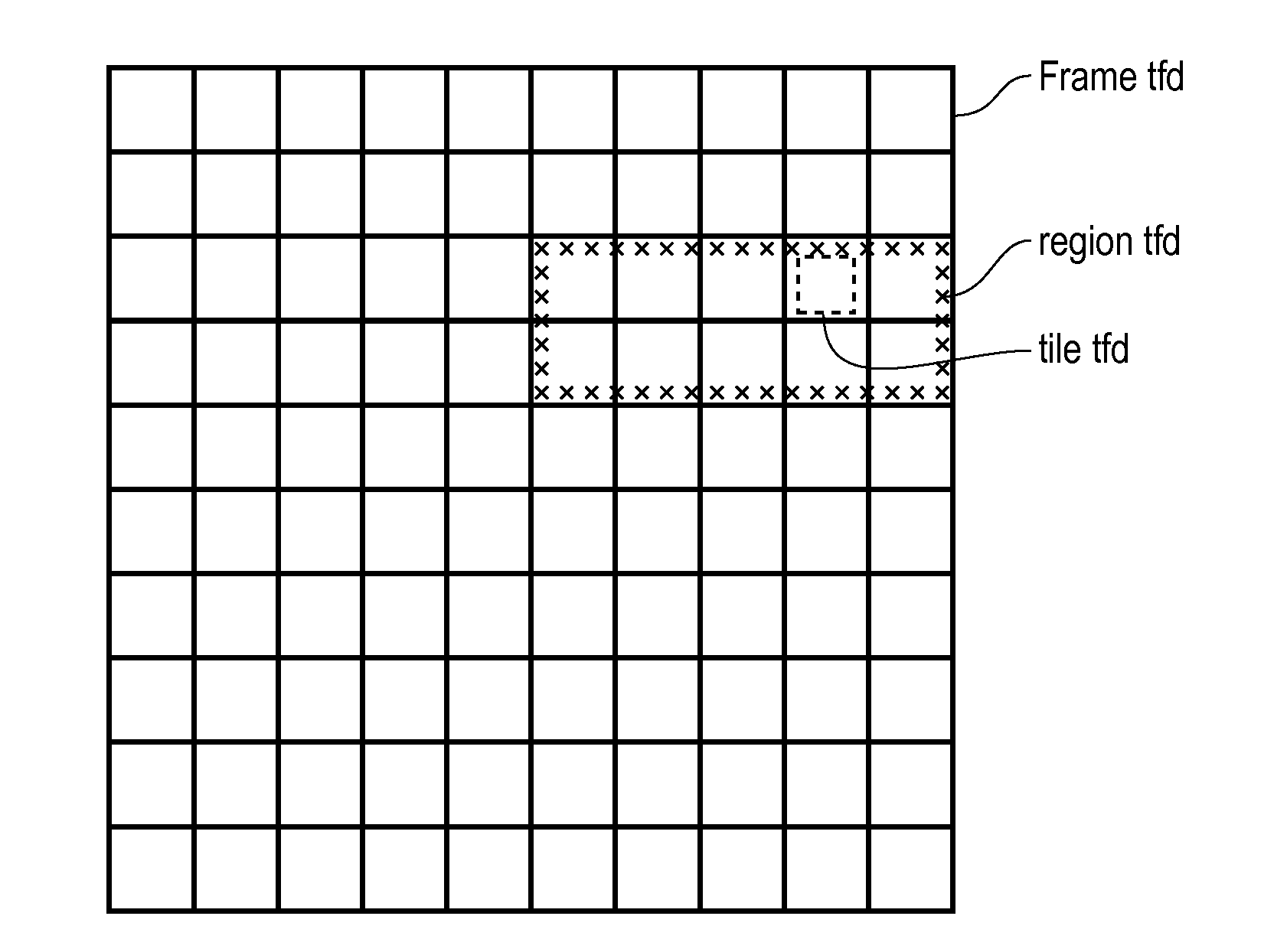Graphics tile compositing control
- Summary
- Abstract
- Description
- Claims
- Application Information
AI Technical Summary
Benefits of technology
Problems solved by technology
Method used
Image
Examples
Embodiment Construction
[0041]FIG. 1 schematically illustrates a plurality of input frames, each comprising a plurality of input graphics tiles. The input graphics tiles, in this example, contain 16*16 pixels. Each pixel has associated red green and blue pixel values together with a transparency (or alpha plane) value. In some embodiments, the pixel colour component values may be pre-multiplied by the associated transparency value. In such circumstances, the behaviour modification circuitry (e.g. read suppression circuitry) may be arranged to suppress the reading, or other processing, of pre-multiplied colour component values with less than a predetermined intensity as these will make little or no contribution to (impact on) the corresponding pixels within the output frame.
[0042]Illustrated in FIG. 1 is the relative ordering of the input frames whereby input frame 2 overlies (in at least the sense of being drawn after) input frame 1, which in turn overlies input frame 0. This ordering may be represented by...
PUM
 Login to View More
Login to View More Abstract
Description
Claims
Application Information
 Login to View More
Login to View More - R&D
- Intellectual Property
- Life Sciences
- Materials
- Tech Scout
- Unparalleled Data Quality
- Higher Quality Content
- 60% Fewer Hallucinations
Browse by: Latest US Patents, China's latest patents, Technical Efficacy Thesaurus, Application Domain, Technology Topic, Popular Technical Reports.
© 2025 PatSnap. All rights reserved.Legal|Privacy policy|Modern Slavery Act Transparency Statement|Sitemap|About US| Contact US: help@patsnap.com



